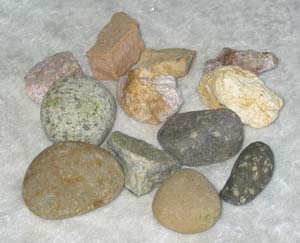Super-size Aquatic Dinosaur
Hello,
This Kids Science Newsletter includes news about a dinosaur that was 50 feet long and mainly lived in streams and lakes. The newsletter also contains a strategy game that is fun for all ages plus other science news and trivia.
Question of the Month
What is the driest place on Earth?
(answer follows the simple science experiment)
Science Current Events
- Super-size aquatic dinosaur
- A super-size aquatic dinosaur has been identified and named Spinosaurus aegyptiacus. The first skeleton was discovered prior to World War II. During the war most of the dinosaur bones were destroyed. A new skeleton was discovered Morocco. Scientists discovered this dinosaur lived most of its life in rivers or lakes. He was a 50-foot predator with a long neck, strong clawed forearms, a powerful jaw, and dense bones similar to a penguin. The predator has been reconstructed at the National Geographic Society.
- Earthquake Water
- The 6.0 earthquake on August 24, shook the ground around Napa, California. The state is going through a major drought and the earthquake brought groundwater to the surface. The groundwater that surfaced after the earthquake filled dry creek beds of formerly trickling streams. Some creeks are reported to contain 20 times above average water after the earthquake. The earthquake opened new
fissures in the ground allowing the groundwater to find new channels as it moved upward. One person reported seeing a geyser of water in the middle of a stream bed.
- Blue whales recovering along California coast
- Blue whales are the largest animals on the planet. A century ago they were hunted almost to extinction by whaling ships. At the time whaling stopped along the coast there were only 750 alive during the 1930s. Today there are more than 2,200. They are now about the same number as before they were hunted by whaling ships. The population of the blue whales near Chile is only about 10% of the number that lived there before the whaling ship. The number of blue whales in Antarctic water is only 1% of their former numbers.
- Mysterious Holes in Siberia
- Three large formed in a remote region of Siberia and officials do not know what caused them. The holes are so deep it is hard to see the bottoms. Officials believe the holes "popped open"
because there is debris around each of the holes that are up to 150 feet across. Officials think that the melting permafrost allowed gas to build up underground until there was enough pressure to create the three large holes in the ground with the ground above the gas blew the holes in the ground.
Science Trivia
- At Dallol, Ethiopia, the daily average temperature in the shade is 94 degrees Fahrenheit (34.4 degrees Celsius). Dallol has the hottest average temperature on our planet. The coldest place on Earth is Vostok, Antarctica where the average temperature during the year is -72 degrees Fahrenheit (-57.8 degrees Celsius).
- No human had set foot on New Zealand until about 2000 years ago. The first settlers in New Zealand where Polynesians known as Maori. The Maori came to New Zealand by canoe from islands in the Pacific Ocean. The Maoris lived mostly near the coast after settling in New Zealand.
- The common Black Ants and Wood Ants have no sting, but they can squirt a spray of formic acid. Some birds put these ants in their feathers because the ants squirt formic acid which gets rid of parasites on their feathers and body.
- The radio was originally designed to only transmit simple messages. In 1906 music was first broadcast by radio. By the 1940s many households
in Europe and America had a radio. It was the most popular type of family entertainment until the arrival of television.
Simple Science Activity
Pebble Game
Introduction
Games are a good way for people to remember information or to learn a strategy. This activity is a game of strategy. The object of the game is for a player to pick up the last pebble.

Materials
Directions
- The game requires two players.
- Place twelve pebbles on the table.
- Each player when it is their turn must pick up 1, 2 or 3 pebbles.
- Decide who will be the first player by flipping a coin or drawing straws, etc.
- The first player begins the play by choosing to pick up 1, 2 or 3 pebbles.
- The second player continues the game picking up his pebbles.
- The player who picks up the last pebble is the winner.
- Players alternate taking turns being the first player when several games are played.
Extending the activity
Once players have a strategy that allows them to win consistently increase the number of pebbles to increase the difficulty of the game.
Answer to the question of the month
What is the driest place on Earth?
The Atacama Desert in northern Chile. It gets almost
no rainfall, except for an occasional shower only several times each century. Rain falls so seldom there that the showers average out to be a mere 0.003 inch of rain a year.
Links to our back issues of Kids Science Newsletter
Our Other Websites
Ring of Fire Science
Science Kits for Kids
Kids Earth Science
Please share this newsletter with a friend by forwarding it to them. If you know of a group who might enjoy the newsletter please let them know about it also.
Comments? Ideas? Feedback? I'd love to hear from you. Just reply to this Just For Kids Science Newsletter and tell me what you think!
Sincerely yours,
Myrna Martin

